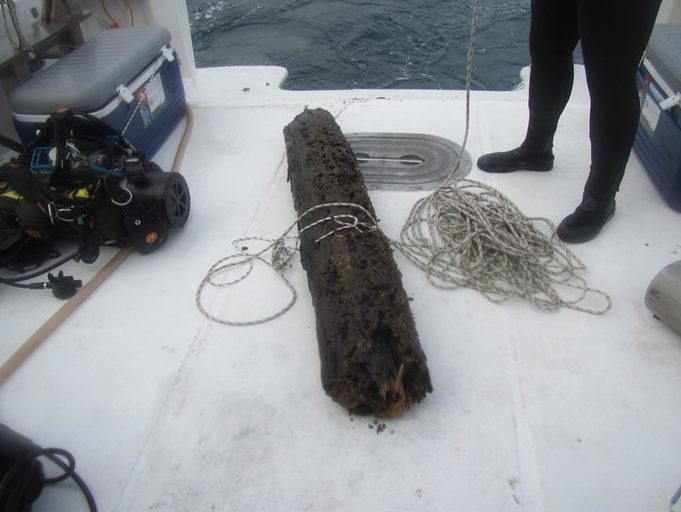Conserved trees under lakes and arms of the sea are not uncommon; the entire city of Venice, Italy, rests on a forest of logs buried in the mud. On the coast of the state of Alabama, in the USA, the submerged cypress trunks where, 60,000 years ago, there was a forest, may become the main element for the manufacture of medicines and the production of industrial enzymes.
Today, under a protective layer of peat and sediment, these trees are being analyzed by scientists at Northeastern and Utah universities, within a program funded by the Office of Ocean Exploration and Research (OER) of the National Oceanic and Atmospheric Administration ( NOAA), part of the U.S. Department of Commerce.
The cypress forest was born, developed and died on the banks of a prehistoric river. And it was the initial tomb of the trees that fell on its bed, later covered by the sea when the level of the oceans rose and the coast line receded. Hidden by sediment, the logs were revealed by the fury of Hurricane Ivan, which, in 2004, swept the Gulf of Mexico coast and revolved the seabed.

Wood still retains its color
However, it was only in December 2019 that teams of scientists began to bring samples of the trunks to the surface - which, even buried for 60,000 years, are still intact because of the lack of oxygen, which prevented their decomposition.
“Diving there brings a strange feeling of going back in time: the wood still creaks and maintains its color internally,” Brian Helmuth, professor of Marine and Environmental Sciences at Northeastern University, told CNN.
The trunks conserved under the bottom of the old river not only gave a view of the geological past of the region, but also proved to be a true farm of marine animals and their symbiotic microorganisms. This fauna is the target of research for its biopharmaceutical and biotechnological value.
Unknown bacteria and underwater robots
Among the more than 300 animals found in the wood already examined, a tiny mollusk became the object of study by the teams. It acts like a “sea termite”: like its terrestrial cousins, it digs prehistoric wood, feeding on it.
The scientists focused on it because of an earlier study, done with bacteria found in marine worms extracted from wood from ships, which resulted in an antibiotic still being tested. Medicines made from symbiotic microbes produce less toxicity than free-living bacteria.
In the case of the submerged forest in Alabama, the researchers extracted 100 strains of bacteria, many unknown. Genome sequencing work has already started on 12 strains, targeting new drugs and, in the case of enzymes produced by them in the digestion of wood, their use in the production of paper, textiles, food and renewable fuels.
With the covid-19 pandemic, universities restricted their work to laboratories. “We hope to get underwater robots to film and photograph the submerged forest, which will allow us to simulate in 3D how it was and record it for the world”, explained the chief technician of the Helmuth Laboratory, at the Marine Science Center of CNN. Northeastern University, Francis Choi.


